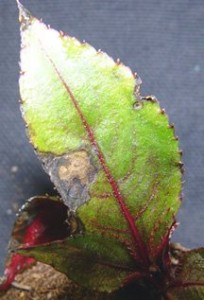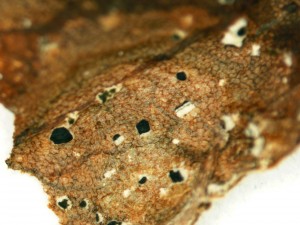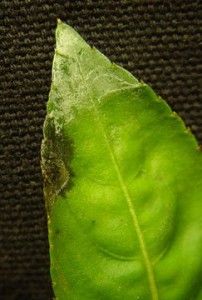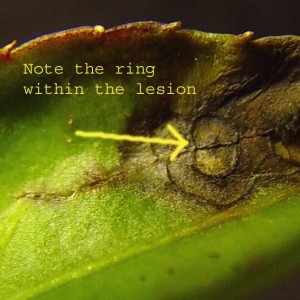Myrothecium leaf spot
Pathogen: Myrothecium roridum
Hosts: Lamium, Molucella, Rudbeckia, Salvia, New Guinea impatiens
Symptoms: This disease causes leaf spots, concentric rings may develop in the lesions. Raised black sporodochia develop on diseased tissue. In high humidity sporodochia are encircled by a tuft white growth.
Spread: Spores are splash dispersed by irrigation water and rainfall.
Management: Avoid injuries to plants, young or injured tissue is most susceptible. One common cause of wounding of perennials is packaging for shipping; disease readily develops following shipping. Avoid excessive fertilization, high fertilizer rates that favor lush foliage growth have also been associated with disease outbreaks. Minimize periods of leaf wetness through careful timing of irrigation. Fungicide applications may be needed to control severe disease problems.






Other Documents in this Series
You Might Also Be Interested In
-
Vincenzina Caputo Earns USDA NIFA Grant to Research Consumer Acceptance of Gene-Edited Food
Published on January 14, 2019
-
Blanching and Freezing Foods
Published on August 9, 2023
-
Basics of Atmospheric Steam Canning
Published on August 29, 2023
-
Michigan Fresh: Using, Storing, and Preserving Asparagus (HNI28)
Published on July 10, 2023
-
Michigan Fresh: Using, Storing, and Preserving Okra
Published on July 13, 2023
-
Michigan Fresh: Using, Storing, and Preserving Melons
Published on August 28, 2023
Accessibility Questions:
For questions about accessibility and/or if you need additional accommodations for a specific document, please send an email to ANR Communications & Marketing at anrcommunications@anr.msu.edu.



 Print
Print Email
Email




